Stearyl alcohol. Find similar products See other brands by this manufacturer. However, an infant's rapidly evolving organ systems are both immature and exquisitely sensitive to chemical insults. In this article we'll try to answer those questions. Indicates country where product is sold. Once you do find a diaper brand you like, sign up for the perks like Pampers Club. We then added 65 drops of water, which was completely absorbed by the SAP in a few minutes to become the gelatinous crystal pile you see from two angles in the center and right photos. To accomplish the sequestration, landfills typically employ a plastic or clay liner as a containment system. Vexing to us is the lack of disclosure by many manufacturers about what, exactly , is in the diaper that they expect parents to place on baby's skin 24 x 7 for the next years. The Green Guides state that, "the entire item will completely break down and return to nature i. SAP crystals do the heavy lifting, and are sandwiched between the upper and lower layers of the diaper core material. We've thoughtfully chosen all of our ingredients to care for your baby's precious skin. Best Disposable Diapers of While the order was specifically about gDiapers, it wouldn't surprise us if the FTC decision eventually applies to all biodegradable claims for disposable diapers.

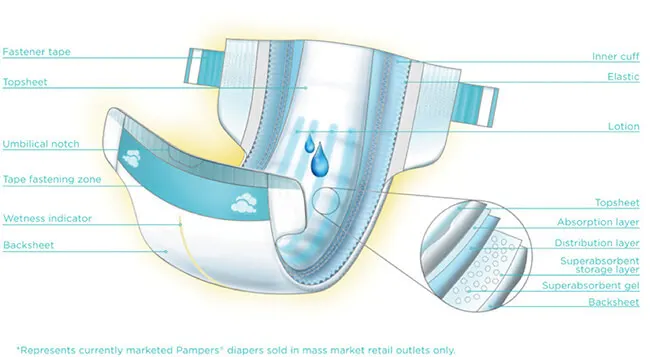
And, like avoiding chlorine in diapers, avoiding perfume in diapers is easy and painless. Form: pad. Best Strollers of Chemicals are associated with codes that define their health, physical and environmental hazards. For this reason, and others see below on Perfumes , we urge parents to buy Fragrance-free diapers only. Several companies have stated an intention to manufacture plant-based biodegradable SAP.
Review this article:
These dyes can cause skin rash, as they may cause allergic reactions in some babies where the dye touches baby's skin. In this paper, they noted, "Children are uniquely vulnerable to phthalate exposures given their hand-to-mouth behaviors, floor play, and developing nervous and reproductive systems. For babies with more sensitive skin or if you just want a diaper with fewer ingredients , Pampers Pure diapers are hypoallergenic and free of elemental chlorine, fragrance, parabens, and natural rubber latex. Best Overnight Diapers. And we mean all. Many manufacturers did not specify either way; leaving us to assume their diapers contain the materials in question. CAS No. Even if you fold it in a disposable diaper? Not all diapers use Phthalates. Pampers Diapers Pampers Swaddlers One of the most popular diaper choices for newborn babies, Pampers Swaddlers are super soft and designed with a special liner that wicks wetness away from skin. Disposable Diapers. Are the materials really safe? However, an infant's rapidly evolving organ systems are both immature and exquisitely sensitive to chemical insults. When we looked at their websites for more information, we found the words pigments, inks, and colorants to describe the prints.
Pampers Ingredients and Safety Questions | Pampers
- But, figuring out which ones do is a challenge, since US law does not require disclosure of Phthalates.
- To avoid risk of choking on plastic, padding, or other materials, do not allow your child to tear the diaper or handle any loose pieces of the diaper.
- This knowledge somewhat levels the playing field between cloth and disposable diapers and their perceived convenience.
- Identified, on a case-by-case basis, from scientific evidence as causing probable serious effects to human health or the environment of an equivalent level of concern as those above e.
- As a result, the use of SAP in tampons was discontinued.
- To our knowledge, plant-based SAP is not currently being used by any diaper manufacturer that we are aware of, but we are optimistic that it will be in the near future.
This article is part of our review of The Best Disposable Diapers. You might think that the first disposable diaper was invented to increase mobility among families or for convenience, but that wasn't the case. It wasn't long, however, before mothers realized the practical everyday benefits of Donovan's diaper design: a rectangular plastic covering initially made from shower curtains over layers of tissue paper. Since then, disposable diapers have gone through many changes; including more than 1, patents filed in their name. Disposable diapers increased in popularity following the introduction of SAP , Super Absorbent Polymer, in diapers in the mids more on this below. Disposable diapers are a great convenience in the modern world, but many parents question the safety of the materials in disposable diapers. Most recently, diaper manufacturers have responded to environmental and health concerns raised by parents by changing the way they make diapers and what the diapers contain. There is a trend toward greener and more biodegradable disposable diapers, which we view as a step in the right direction. However, we're not out of the woods yet and depending on which brand of diaper you choose, the risks and impact can vary. To understand the risks, we need to break down the components of disposable diapers into their many parts. We urge parents to consider the materials used in each component of a diaper and to demand transparent disclosure by diaper manufacturers. A summary of the essential diaper components is below. Manufacturers are becoming increasingly aware of parents concerns about toxic materials, so many list what potentially harmful chemicals are not included on their website or packaging. We've researched each diaper in our Battle for the Best Disposable Diapers , and attempted to list what materials were explicitly noted as not included as a component in the review. Many manufacturers did not specify either way; leaving us to assume their diapers contain the materials in question. Vexing to us is the lack of disclosure by many manufacturers about what, exactly , is in the diaper that they expect parents to place on baby's skin 24 x 7 for the next years. We urge you to buy from manufacturers who offer complete transparency in their diaper ingredients.
Skip To Content. Add to cart. Nearby stores View store map. Description Your search for pure protection that works is over! Designed to help skin stay dry and healthy, Pampers Pure Protection diapers lock wetness away from skin for up to 12 hours for outstanding leakage protection with skin-loving care, ingredients in pampers diapers. Plus, our designer, boutique prints make Pampers Pure just as precious as they are protecting. We've thoughtfully chosen all of ingredients in pampers diapers ingredients to care for your baby's precious skin. Our exclusive, plant-based liner plant-based and polypropylene blend is enriched with shea butter to help nourish and protect skin while our outercover is enhanced with premium cotton, making Pampers Pure Protection diapers irresistibly soft and breathable. But the ingredients we've chosen to leave out are just as important. That's why Pampers Pure Protection diapers are free of elemental chlorine, fragrance, ingredients in pampers diapers, parabens, and latex natural rubber and are hypoallergenic.
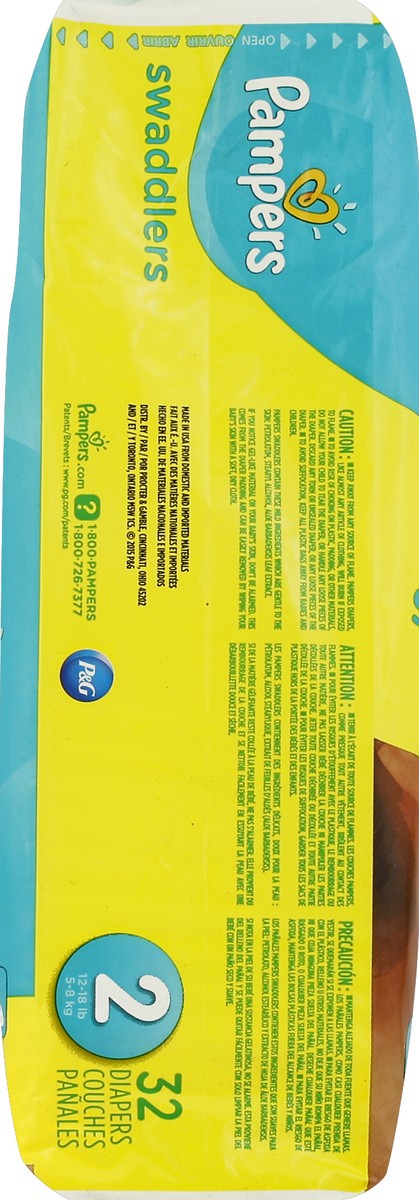

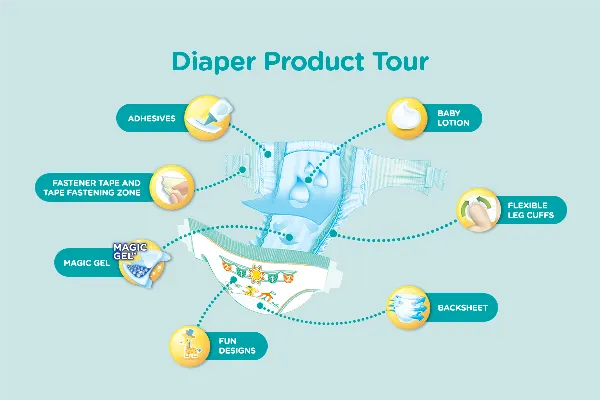
Ingredients in pampers diapers. Pampers Pure Diapers Review
Products in this Consumer Product Information Database CPID are classified based on their composition: Substances: single chemicals Preparations: products which contain chemicals that can be easily separated during normal use Articles: products or product assemblies that do not contain chemicals that can be separated out from the product or assembly under normal or advertised use. The GHS is a system for standardizing and harmonizing the ingredients in pampers diapers and labelling of chemicals, ingredients in pampers diapers. Chemicals are associated with codes that define their health, physical and environmental hazards, ingredients in pampers diapers. This universal hazard communication system was developed to ensure that employers, employees and consumers are provided with adequate, practical, reliable and comprehensible information on the hazards of chemicals, so that they can take effective preventive and protective measure for their own health and safety. The GHS classifications for chemicals associated with products in this database may be viewed by selecting the "Advanced" button on the Chemical Ingredients tables. Since this is a work in progress, GHS classifications may not be shown for all ingredients in pampers diapers ingredients. Chemical Abstracts Service Registry Number is a unique identifier for a chemical and its synonyms. CAS numbers identify the chemical, but not its concentration or specific mixture. For more information: www. There are 4 categories of Hazard Codes:. SVHC is a substance identified by the European Chemicals Agency that may have serious and often irreversible effects on human health and the environment.
Swaddlers? Pure? Overnights? Here’s how to choose the right diaper for your baby.
Babies go through over 2, diaper changes in the first year. And if you stand in the diaper aisle for long enough, it might seem like you could choose a different diaper for each of those changes. There are Swaddlers and Pure and Overnights. How are you supposed to know which one your baby needs in this moment? But first, a couple of quick tips:.
These tiny crystals are sprinkled inside the layers of the absorbent core of a diaper to absorb and trap fluid i.
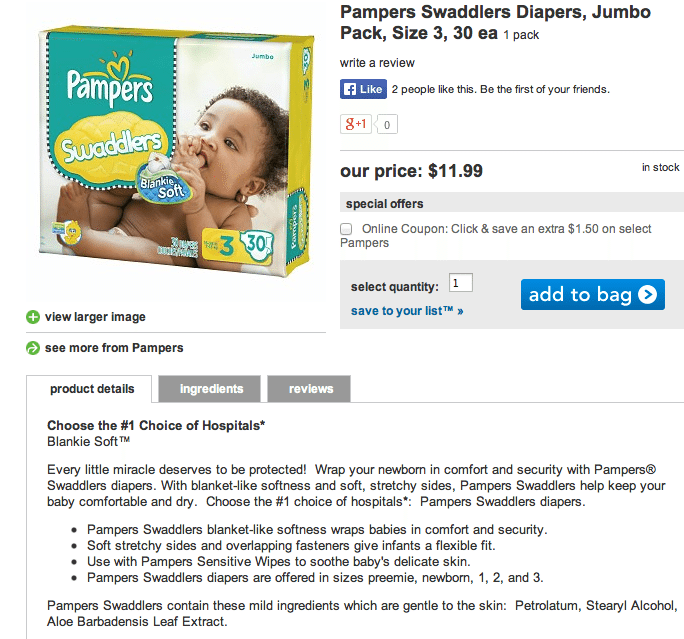
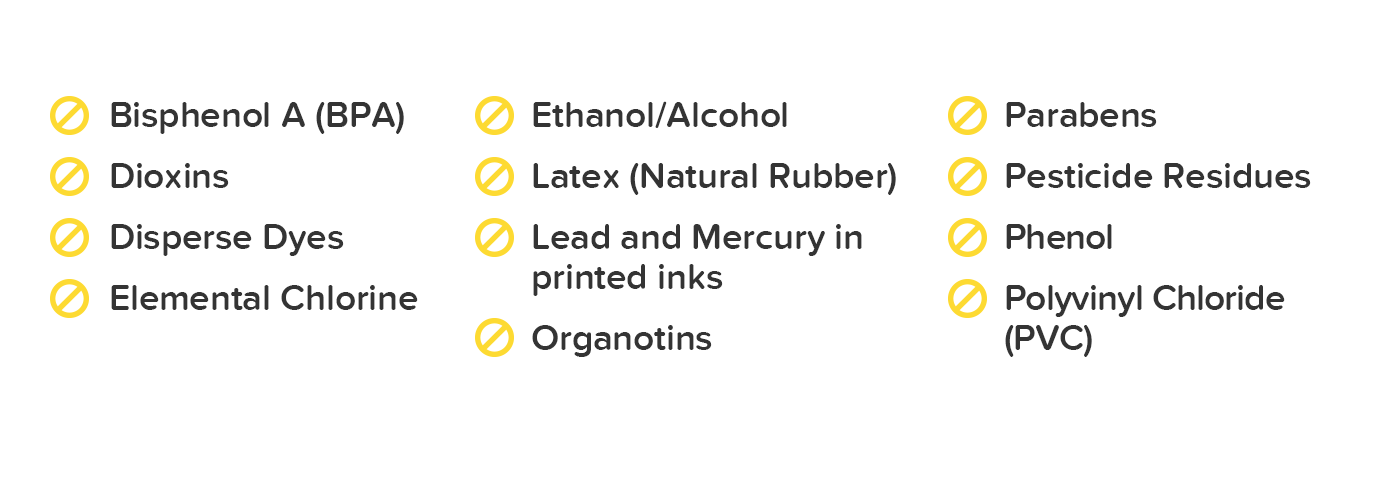
Completely I share your opinion. In it something is also to me it seems it is excellent idea. Completely with you I will agree.
Quite, yes
Absolutely with you it agree. It is excellent idea. It is ready to support you.